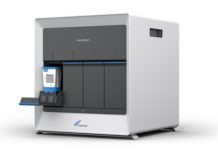There are several ways you can test for alcohol or drug use. Some methods are more accurate than others, while some may only be able to detect certain types of drugs in your system. The specific test will depend on certain factors, including how much time has passed since you last consumed the drug or alcohol. As businesses continue to see the employee drug testing advantages, it’s highly likely you will run into a 10 panel drug test when applying for a new job.
Here are some common medical testing methods for drug and alcohol consumption:
-
Hair Follicle Test
A hair follicle test takes a sample of your hair and analyzes the level of drugs or alcohol in it. A single hair strand will be plucked and collected, as the sample nearest the scalp will detect the most recent substances consumed.
According to www.lextox.co.uk, head hair grows around 1 cm each month, equivalent to the average rate of hair growth in a month. Among all the tests for drug and alcohol consumption, hair tests have the most prolonged detection period. This is because your hair will have traces of the substance you’ve consumed and will stay on your hair for months or years, especially if you don’t cut your hair.
However, hair takes time to grow, which makes hair follicle tests unsuitable for testing recent drug or alcohol consumption. Instead, hair samples can help determine when use began and whether or not it’s been discontinued.
-
Blood Test
The most accurate way to test for recent drug and alcohol consumption is through a blood test. A medical professional will draw blood from your body, usually from your arm or hand, and use it to evaluate the levels of different chemicals in your bloodstream. This method can detect the presence of multiple substances, including alcohol, marijuana, cocaine, methamphetamine, opiates, and benzodiazepines.
Law enforcement agencies and medical professionals often use blood tests, especially if there are signs of substance abuse. However, blood tests often have limited detection windows and are most accurate when tested within two to 12 hours from last use.

-
Saliva Test
A saliva test is one of the most common ways to detect the presence of drug consumption in the body system. This drug testing method provides quick results but must be administered correctly. A medical professional will place a cotton swab in your mouth and gently rub it against the inner cheek or under the tongue. This will allow them to collect some saliva, which they’ll use to test for the presence of drugs.
Proper administration of the test is critical because a saliva test can produce false positives if conducted incorrectly. Like a blood test, saliva tests have strict detection windows and are most accurate when tested within five to 48 hours from last use. However, this varies depending on the specific drug being tested for.
-
Urine Test
The urine test is one of the most common and inexpensive ways to test for drug use. You’ll receive a tamper-proof cup which will be used to collect the urine sample. Some drug testing centers may cut off the water supply and prohibit you from taking anything with you in the bathroom to minimize contamination.
A urine test can detect different substances. This includes alcohol and other common drugs like amphetamines, marijuana, opiates, and barbiturates. Unlike a blood or saliva test, a urine test has a longer detection window. This is because the body takes longer to metabolize alcohol and other drugs before it’s finally released via urination.
-
Breathalyzer Test
You may be familiar with a breathalyzer test, as this is what law enforcement officials use for those suspected to be driving under the influence. The administration of this test is relatively simple. A person blows into a breathalyzer machine that measures the amount of alcohol on their breath, otherwise known as the blood alcohol content (BAC).
Some new breathalyzers have been invented to detect other substances, such as marijuana, methamphetamine, cocaine, and heroin. However, this new breathalyzer device has yet to be used in law enforcement in the United States.
These new inventions were necessary as the traditional breathalyzer device could only detect alcohol. While it’s commonly used among law enforcement officials, home breathalyzers are available in the market for personal use.
It’s important to note, however, that different factors can affect the result of a breathalyzer test, such as body composition, stomach contents, and use of other substances. Thus, if you were out drinking, it’s best to look for other arrangements to stay safe.
Conclusion
There are different tests to test for drug and alcohol use. Some of these include the hair follicle test, the saliva test, the urine test, and the breathalyzer test. Each of these test methods has its own advantages and limitations. It’s essential to learn what each test can detect and their detection windows to get accurate results. Lastly, some tests may cost more than others, with the hair follicle and blood tests being among the most expensive, whereas the urine test is often more affordable.
















